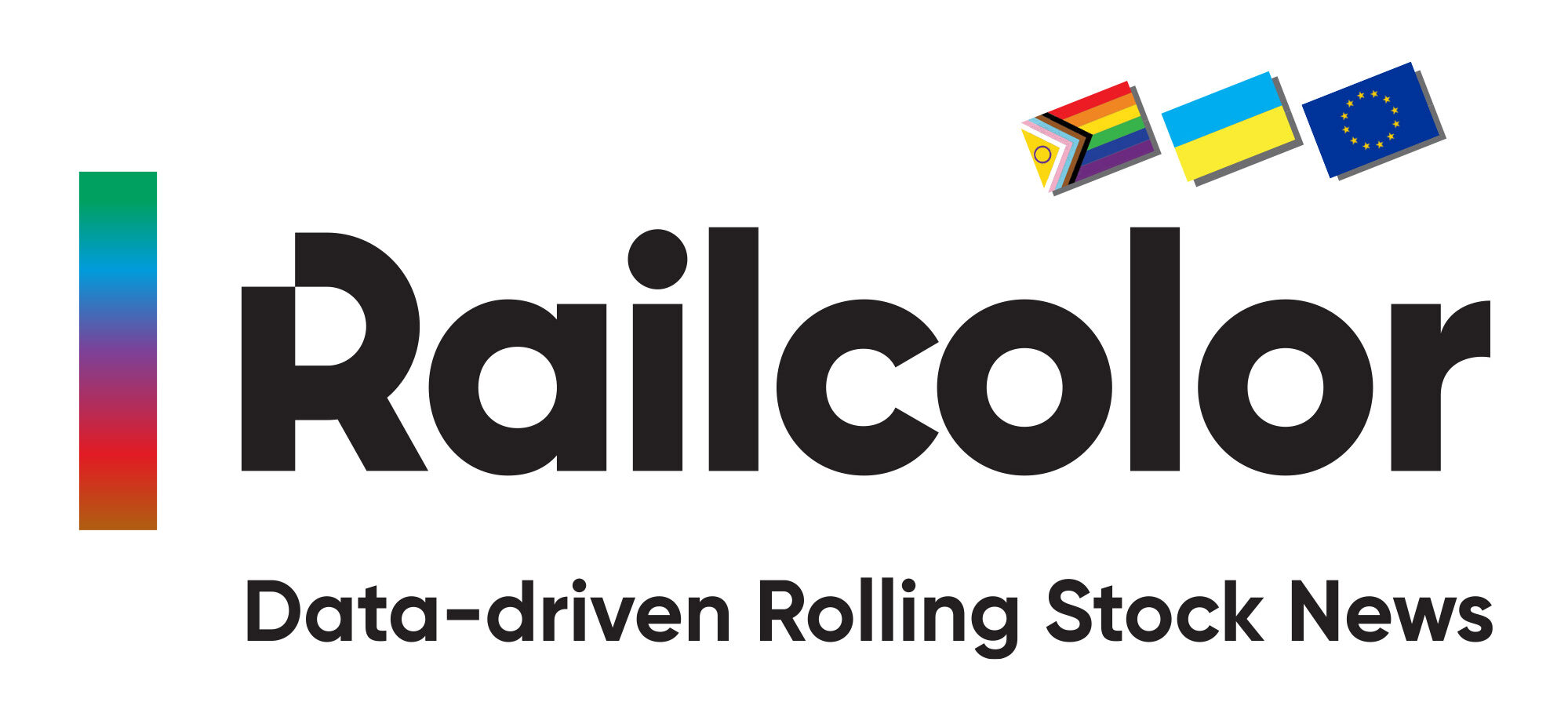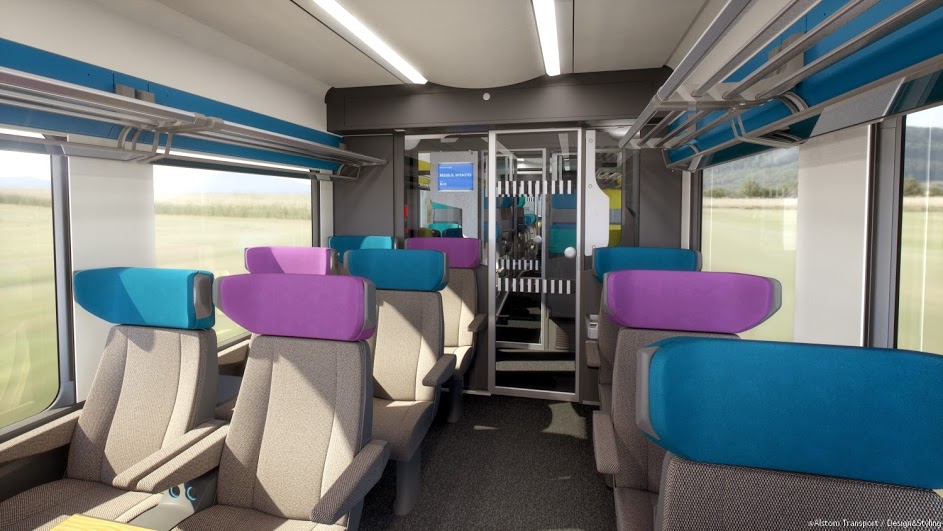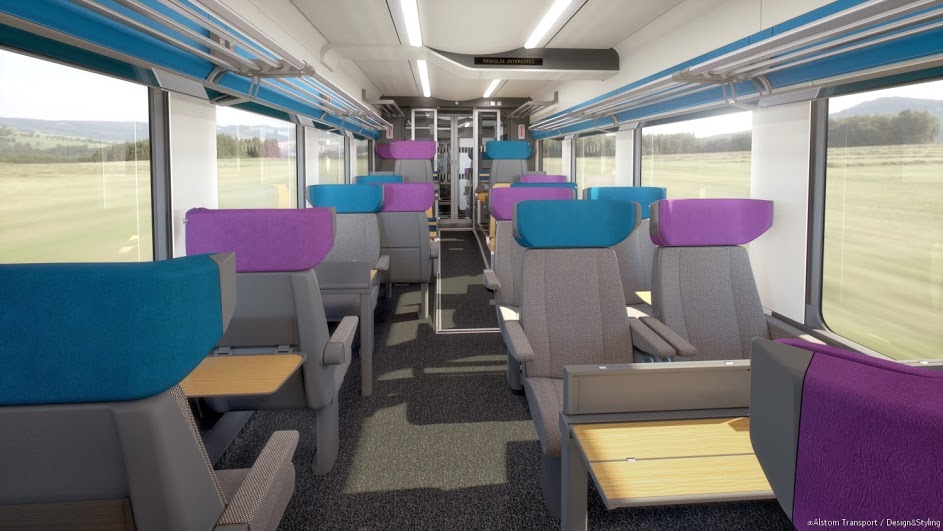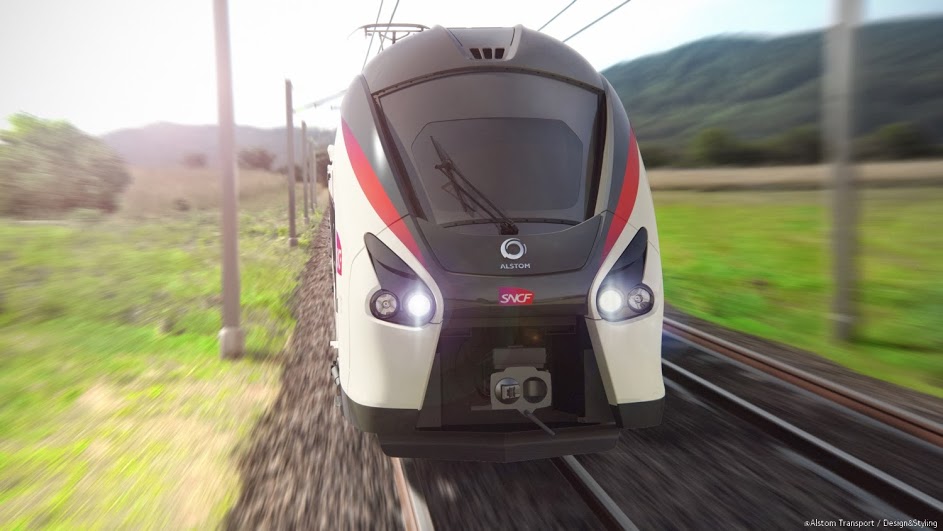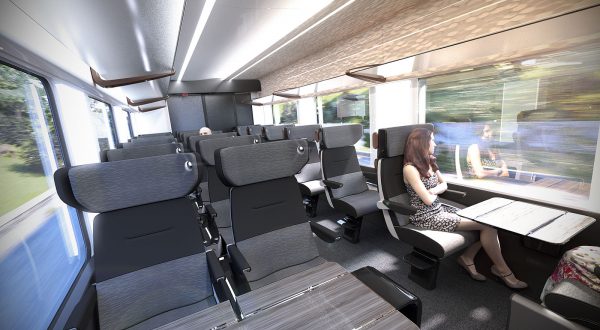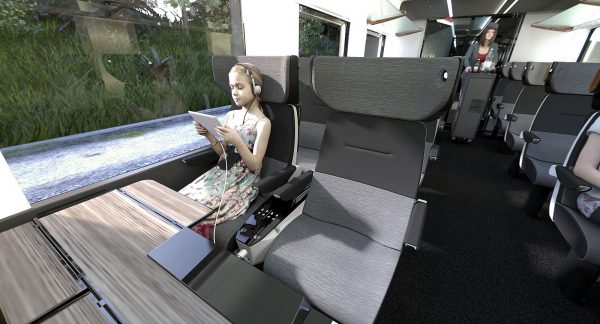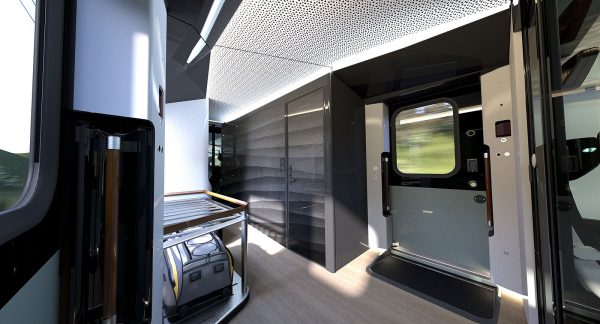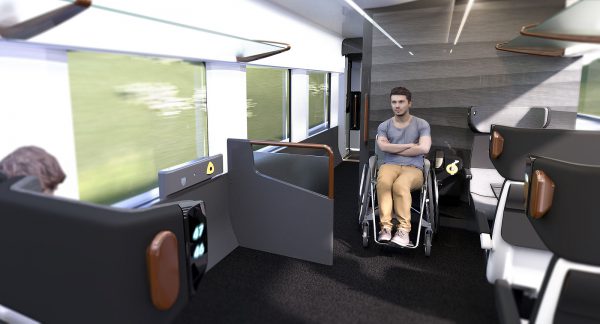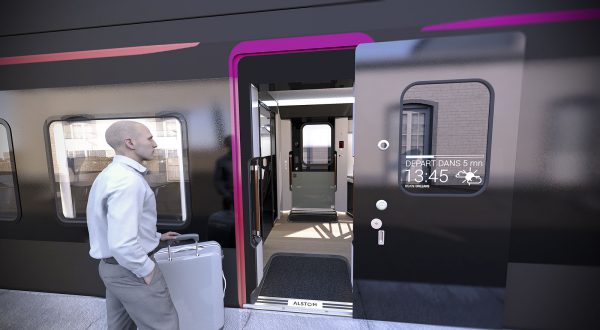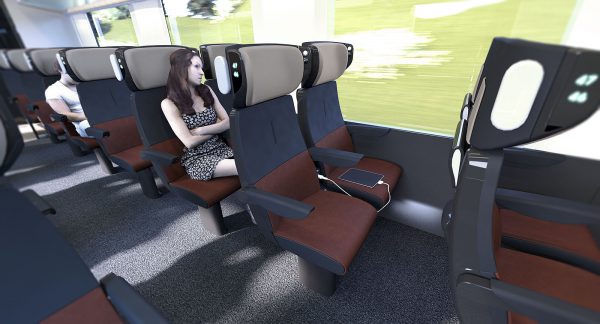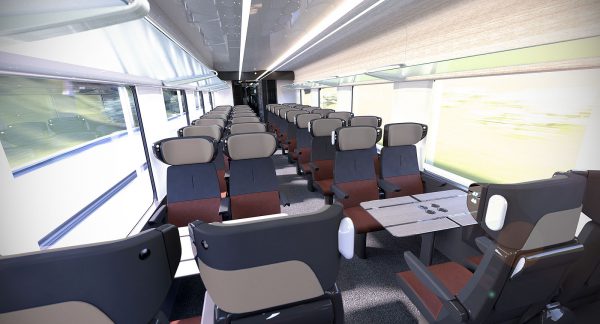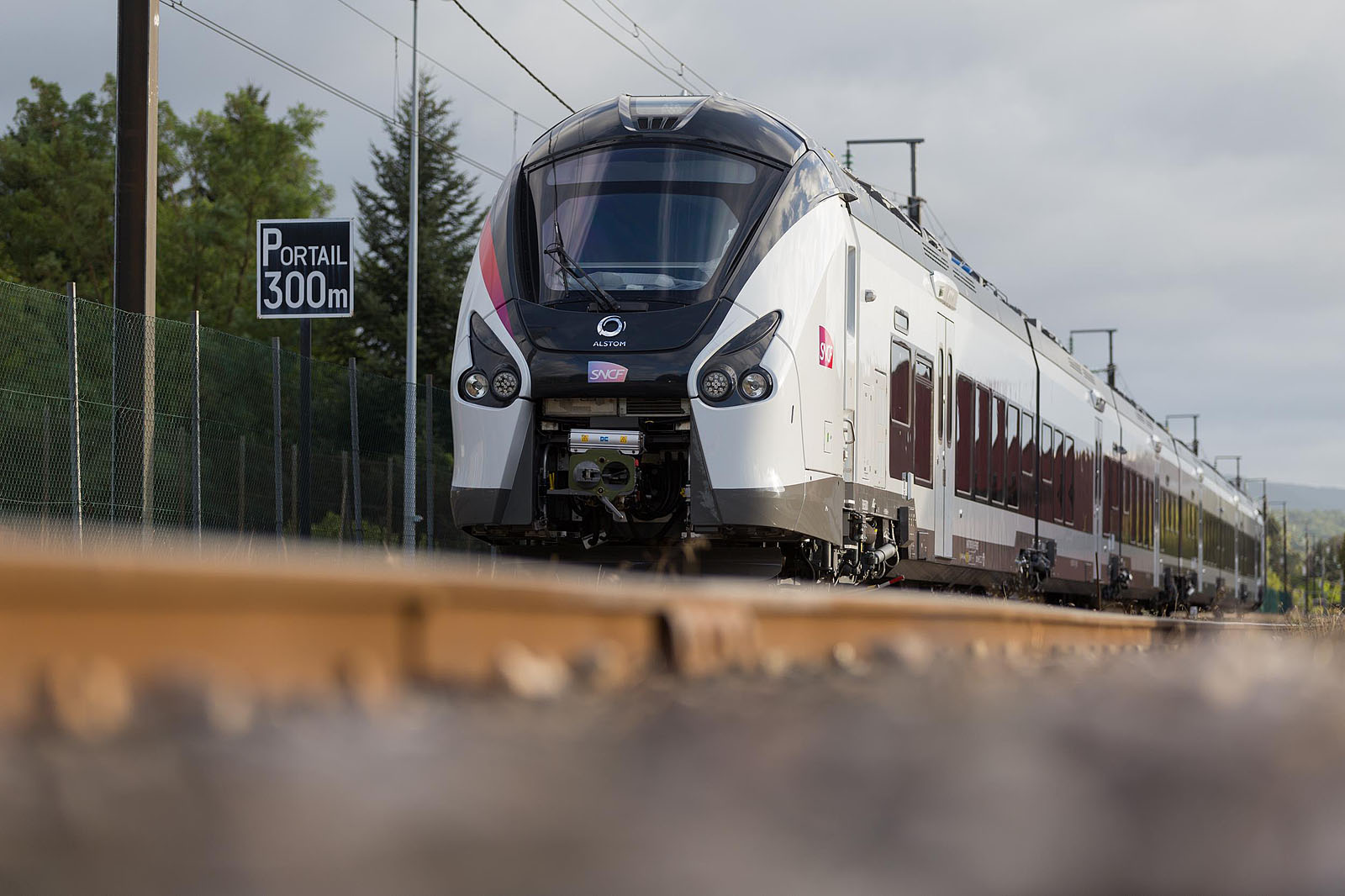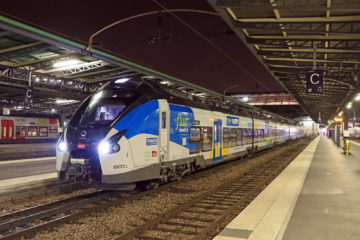On 12.07.2013 a train crashed at Brétigny-sur-Orge, in the southern suburbs of Paris. An Intercités service with 385 passengers derailed and hit the station’s platform. Seven people were killed, almost 200 were injured. Although the accident was caused by dysfunctional infrastructure – a fish plate / railjoint got stuck in a switch – the event led to a discussion about the quality of rolling stock used for conventional intercity services in France. SNCF, the national train operator from France, is still using locomotive hauled rolling stock of the Corail design, first introduced in the mid-70s, on these ‘Trains d’Equilibre du Territoire’ (TET).
Update 24.12.2016: Alstom has two different version of the Coradia Liner under development, the v160 and the v200, referring to the maximum speed of the trains. The artist impressions in this article shows both types, at the time of writing it was not clear to us yet that these were to look different.
True, most Corail coaches in service nowadays have seen an upgrade or two. New interiors, new colors, new features. But that can not hide the fact that Corail is ageing. And times have changed, train traveling requires a different approach to factors such as accessibility, passenger flow, energy efficiency and on board services.
For too long, SNCF focused on its world famous high speed network and its TGV trains, according to many. On a regional level, large sums have been invested in new and innovative rolling stock for regional and suburban services. But the conventional intercity network of long-haul services, interconnecting all major cities and regions in France, by day and by night, did not see any new rolling stock during the past decades.
The government intervenes
The French government decided to step up, and asked the French industry to come with a solution. Trains manufacturer Alstom decided to start the development of a new, modern and comfortable train for TET use: the ‘Coradia Liner’. SNCF immediately placed an order for 34 trainsets (of the v160 version). An order with a value of 350 million euros.
For the first time France will have hybrid train sets on long-haul services. Articulated trains that combine diesel and electric propulsion have a better acceleration compared to hauled trains. As a result, the service performance can also be improved.
Coradia Liner Design
Alstom named the new platform ‘Coradia Liner’ as it part of the larger ‘Coradia’ product family that also includes trains for regional and suburban services. Over the past years, the design and specifications of the Coradia Liner have evolved. In 2013 Alstom released some initial design impression of the Coradia Liner (update 24.12.2016: the Coradia Liner v160 version) that evidently show resemblances to its Coradia Régiolis for regional services. Large, smooth panels, roof mounted equipment, double leaf entry doors. A train with Jacobs bogies are and relatively short carbody sections.

Over time, the design got more refined and a more distinctive look was created for the Coradia Liner (compare the images above from 2013 to the impressions below, published in 2014). Update 24.12.2016: the images below show the v200 version of the Coradia Liner, faster, more aerodynamic, so it is a different type of train. The v200 has a more stretched front design, the front couplings disappear behind a cover, and it features a darker grey livery and single leaf doors.
Coradia Liner configuration
In October 2013, Alstom published the initial characteristics for a Coradia Liner v160 trainset: It will have six cars and a total length of 110 meters, having 267 seats. Main property is a integral low floor construction (innovative for long-haul trains) for ‘full accessibility and smoother on-board passenger traffic’. Each seat will have a power socket and coat hanger (yeah!). There will be dedicated disabled sections and a in-seat waiter service. Note that the Coradia Liner will not have a bar/bistro/restaurant area. According to Alstom, special attention was paid to ‘acoustic comfort’ with the use for noise adsorbing materials on the floor for example.

Delivery schedule
The delivery schedule has changed more than once. After the publication of the initial plans in 2013, the introduction of the new trains have been postponed from December 2015 to ‘during 2017’. Updates about this were provided whenever the French government shared updates about its plans for the TET services.
Update 2014: the v200 version
On 06.06.2014, Alstom officially presented the Coradia Liner v200 at the European Mobility Exhibition for Public Transport in Paris. That day new artist impressions where released showing the updated design (images below).
The Coradia Liner was now ‘designed to renew the pleasure of traveling on major European lines’ clearly hinting towards the development of a European train concept, also being offered to customers outside of France. The train can have ERTMS and is consistent with European standards. Coradia Liner became a flexible platform.

Update 2015
Not december 2015, but 2016 would be the year of the introduction of the Coradia Liner v160. For the first time specific TET routes were mentioned were the trains would be deployed: Paris – Amiens – Boulogne, Paris – Troyes – Belfort, Bordeaux, Nantes, Lyon, en Bourges-Montlucon. Also, SNCF was studying on placing a supplemental order.
Update 2016
In March 2016 the French government declared that all rolling stock used for TET services would be renewed before 2025. No lack of ambition here. Costs of this plan: 1.5 billion euro. A modest first step was taken directly: extra attention for the hygiene on board of the current Corail trains. A supplemental order for Coradia Liner was mentioned: +30. Meanwhile it was clear that also Bombardier would be involved in the TET plans. The company has developed a extra comfortable version of its Omneo double deck train that can have a maximum speed of 200 km/u.
In July 2016 the government published an update on its strategy. SNCF will launch a tender for a further contract to supply 200km/h trains before the end of 2016. For the Bordeaux – Marseilles route trains that can go faster as 200 km/u, as they can use the high speed line available on the route.
Up next
How the latest developments will affect the Coradia Liner project is not clear, yet. We await the delivery of the first trains in 2017, part of the first fixed order of 34. Let’s end with a animation of the train, being a hologram showcased during InnoTrans 2014:
